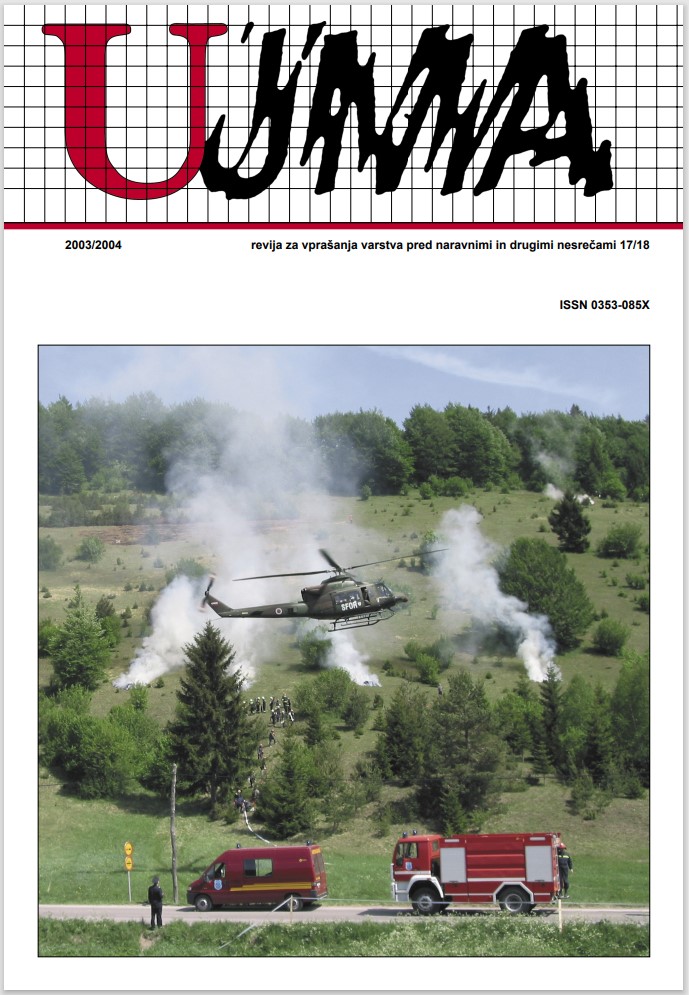TUNNEL SAFETY
Abstract
Road tunnel safety came to the attention of the public mainly during the last few years after some tragic accidents in a number of European tunnels. Because of the confined environment, accidents in tunnels, particularly fires, can have dramatic consequences. The number of accidents in tunnels is relatively low in comparison to other road “environments”, but their consequences are much more serious. The main causes of accidents are unsafe behaviours on the part of drivers, inadequate infrastructure and operations, vehicle defects and problems with loads such as chemical reactions. The risk of serious fires has significantly increased in recent years due to the increase in use of tunnels and, in international tunnels in particular, a lack of co-ordination between both sides. Moreover, serious accidents have shown that non-native users are at a greater risk of becoming a victim in an accident due to the lack of harmonisation of safety information, communication and equipment. Characteristics of human behaviour in fires are presented. People in fires are ‘prone to normalcy’, to inaction, while panic is very rare. Studies show that this finding is also valid in tunnels. An additional problem in fires is the low visibility due to smoke. Therefore, the use of directional sounds at emergency exits is recommended. The safety of travelers also depends on actions by tunnel staff. Suggestions for the prevention of accidents and the mitigation of their consequences are given.
References
Amundsen, F. H., Ranes, G., 2000. Studies on Traffic Accidents in Norwegian Road Tunnels, Tunnel Safety, Tunneling and Underground Space Technology, 15, 1, 3–11.
Andersen, T., Paske, B. J., 2002. Fire safety in tunnels and selection of tunnel concept. Det Norske Veritas.
Aty, M., 2002. Tunnel Safety, Technical Clearinghouse For Auto Clubs (povzeto po medmrežju).
Biecheler-Fretel, M. B., Danech-Pajouh, M., 1988. Alcohol, Mobility and Basic Driving Behaviour. V: Rothengatter, J. A., deBruin, R. A.(Eds.), Road User Behaviour. Assen: Van Gorcum.
Boer, L. C., 2002. Behaviour by motorists on evacuation of a tunnel. TNO Report, TM-02-C034, Soesterberg: TNO (povzeto po medmrežju).
Brown, I. D., 1982. Driver Behaviour. V: Chapman, A. J., Wade, F. M., Foot, H. C., (Eds.). Pedestrian Accidents, New York: Wiley, 133–168.
Cannon-Bowers, J. A., Salas, E. (Eds.), 1998. Making Decisions Under Stress. Washington: APA .
Canter, D., Breaux, J., Sime, J., 1980. Domestic, Multiple Occupancy, and Hospital Fires. V: D. Canter (Ed.). Fires and Human Behaviour. Chichester: Wiley, 117–136.
Commission of the European Communities, 2002. Proposal for a Directive of the European Parliament and of the Council on Minimum Safety Requirements for Tunnels in the Trans-European Road Network. Brussels: COM(2002) 769 final (povzeto po medmrežju).
Dragland, A., 2002. Comfort in the tunnel (povzeto po medmrežju).
European Commission, 2002. Safety in European Road Tunnels. Brussels, (povzeto po medmrežju).
Eurotest 2002: Tunnel tests (povzeto po medmrežju).
Heath, R., 1998. Crisis Management for managers & executives. London, Financial Times.
Johansson, G., Rumar, K., 1966. Drivers and Road Signs. Ergonomics, 9, 57–62.
Lindell, M. K., Perry, R. W., 1987. Warning Mechanisms in Emergency Response Systems. International Journal of Mass Emergencies and Disasters, 5, 2, 137–153.
OECD, 2001. Safety in Tunnels, Paris.
Recommendations of the group of experts on safety in road tunnels, final report, Trans/AC.7/9, 2001.
Quarantelli, E. L., 1977. Panic Behavior: Some Empirical Observations. V: Conway, D. J. (Eds.), Human Response to Tall Buildings. Stroudsburg: Dowden.
Quarantelli, E. L., 1984. Perceptions and Reactions to Emergency Warnings of Sudden Hazards. Ekistics, 309, 511–515.
Santos, J. A., 1997. Detection Time of a Leading Vehicle’s Motion: Effects of Driving Speed and Road Layout. V: Rothengatter, T., Vaya, E. C. (Eds.) Traffic & Transport Psychology. Amsterdam: Pergamon, 113–120.
The world’s longest Tunnel Page, Serious Fire Accidents in Road Tunnels, (povzeto po medmrežju: http://home.no.net/lotsberg/artiklar/brann/en_tab.html).
TNO, 2001. Research into the safety of tunnels (povzeto po medmrežju).
Turner, R. H., Killian, L. M., 1972. Collective Behavior. Englewood Cliffs: Prentice Hall.
Withington, D. 1999. Localisable Alarms. V: Stanton, N. A., Edworthy, J. (Eds.). Human Factors in Auditory Warnings. Aldershot: Ashgate, 33–40.
Withington, D., 2000. The use of directional sound to improve the safety of auditory warnings. A paper presented at the XIVth Triennial Congress of the International Ergonomics Association, San Diego.
Withington, D., Lunch, M., 2002. Directional sound evacuation (povzeto po medmrežju www.directionalsoundevacuation.com).
Speech Intelligibilty, 2002 (povzeto po medmrežju: www.spfe.org).
Downloads
Published
Issue
Section
License

This work is licensed under a Creative Commons Attribution-NonCommercial-NoDerivatives 4.0 International License.
The articles are made available to the public under Creative Commons Attribution-NonCommercial-NoDerivatives 4.0 International (CC BY-NC-ND 4.0).


